These 5 Accomplishments Prove That Santa Claus Is The World’s Greatest Scientist
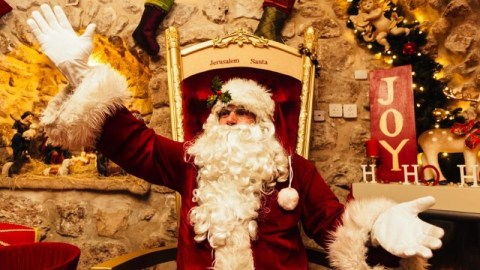
We all have obstacles to overcome in pursuit of our goals. For Santa Claus, it’s clear that science is the key.
Of all the challenges we face in our work, perhaps no one out there has it more difficult than the man in red himself: Santa Claus. Over the course of one long night, a stout and elderly man, equipped with only a magical flying sleigh pulled by eight reindeer, manages to deliver toys to children all across the world. All you have to do is believe in him, and your Christmas wishes can come true, too.
But how is this possible? As the human population continues to increase, along with the population of children who believe in Santa, it seems like the challenge only grows greater. And yet, armed with the power of science, Santa’s continued success in this endeavor, year-after-year, shows us that he must have solved five incredible challenges that still elude modern science and technology. Here’s the science of Santa Claus.
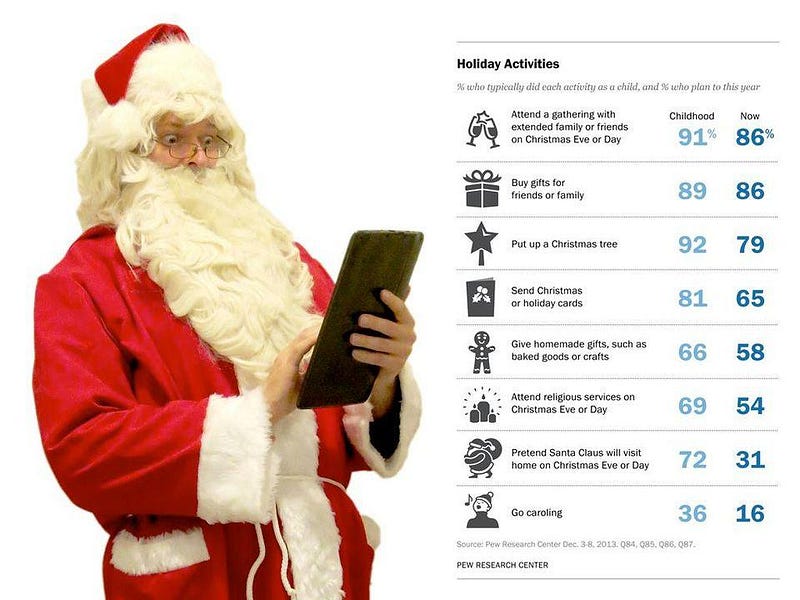
Have you ever wondered just how monumental a task Santa Claus has set before him on Christmas? All across the world, updated for today’s population of 7.4 billion, we can estimate that there are around 1.6 billion households across the world. Of those households, an estimated 31% will be visited by Santa Claus at some point during the night before Christmas: a total of around 500 million households to visit.
And those households are spread out over the entire habitable land surface of the Earth, which encompasses approximately 25 million square miles (65 million square kilometers). With 500 million households, the average separation between any two of them comes out to around 0.205 miles (0.33 kilometers), with Santa having a total of approximately 42 hours to work with between sundown on Christmas Eve in Russia and sunrise on Christmas Day in Alaska.

With 500 million households to hit in just 42 hours, there is so much that Santa needs to accomplish at each one. At a bare minimum, he has to:
- travel from the previous house to the next one without wasting too much time,
- park and depart his sleigh, entering the household undetected,
- deliver each and every one of the necessary presents to that house,
- eat any snacks that were left for him,
- and then exit the house undetected, re-entering the sleigh, and beginning the process all over again.
If we allot him the entirety of the 42 hours available to accomplish this task, he can only spend a maximum of 300 microseconds (or 0.0003 seconds) on the sum total of these tasks for each and every household. It might seem an impossibility, at least for a normal human with conventional technology.
But if Santa truly is the world’s greatest scientist, it could all feasibly fall into place. Here are each the five challenges he’s clearly conquered, with speculation as to how.
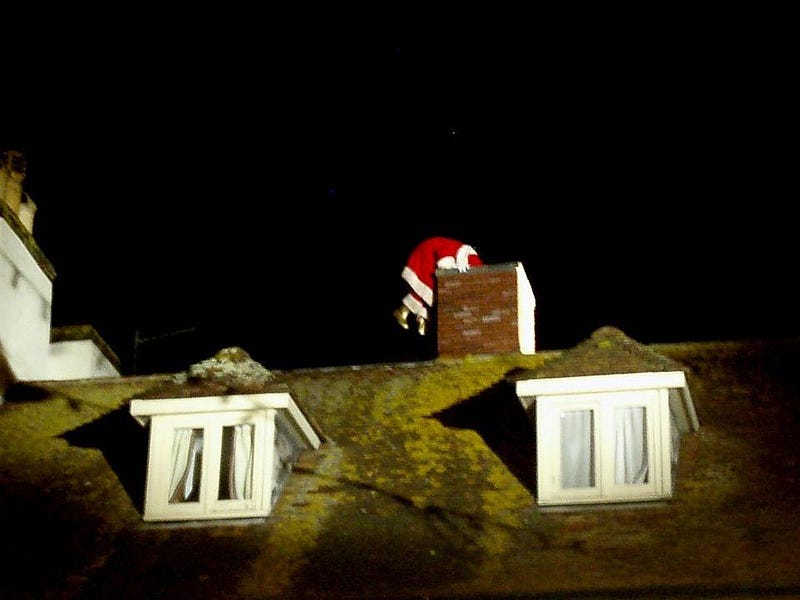
1.) Travel. Let’s give Santa the benefit of the doubt, and assume he spends fully half of his time during his Christmas expedition moving from one house to another: 150 microseconds per house. To travel that distance of 0.33 kilometers (0.205 miles) in that tiny amount of time, that means that Santa needs to move at a speed of 2,200 km/s (1,367 miles-per-second). And that’s not even top speed: that’s just an average speed!
Sure, that’s absurdly fast: about Mach 6400, or faster than any sleigh, car, train, supersonic aircraft, or even any of humanity’s spacecrafts. But even this remarkable speed is less than 1% the speed of light, and far slower than the particles we see from nuclear reactions, particle accelerators, or the Sun.
So long as Santa has the proper fuel and enough energy at his disposal, this is eminently achievable. Of course, that leads to the next problem.
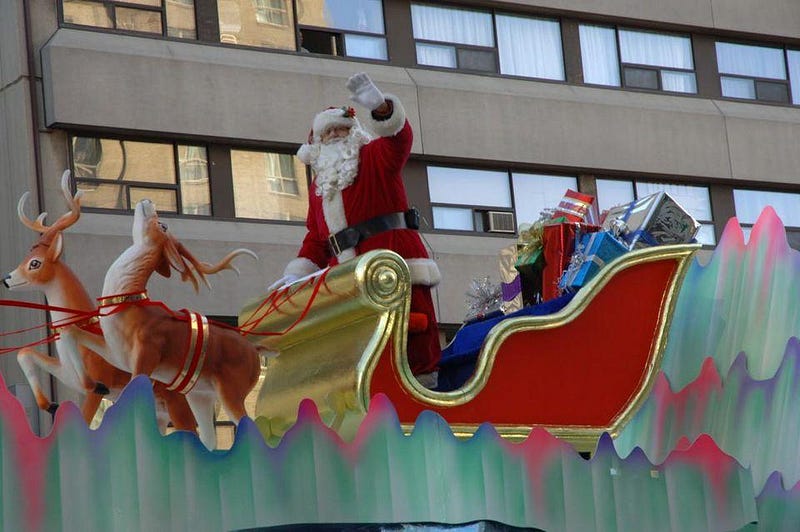
2.) Surviving the heat and acceleration. On the one hand, whether his sleigh is open-cockpit or closed-cockpit, Santa is going to have to fight some tremendously high drag forces, and that means dissipating a lot of heat. The only comparably large speeds we’ve ever experienced with our atmosphere are meteors and re-entering satellites, and they don’t typically fare very well.
However, a sufficiently strong heat shield — placed in front of the reindeer, not just the sleigh — could dissipate all of the heat generated by colliding with the atmosphere at high speeds: on the order of trillions of joules per second. If Santa decided that an unobscured view in front of the sleigh was an absolute necessity, evacuating most of the air in front of the reindeer via some sort of vacuum pump would give him a second option for success.
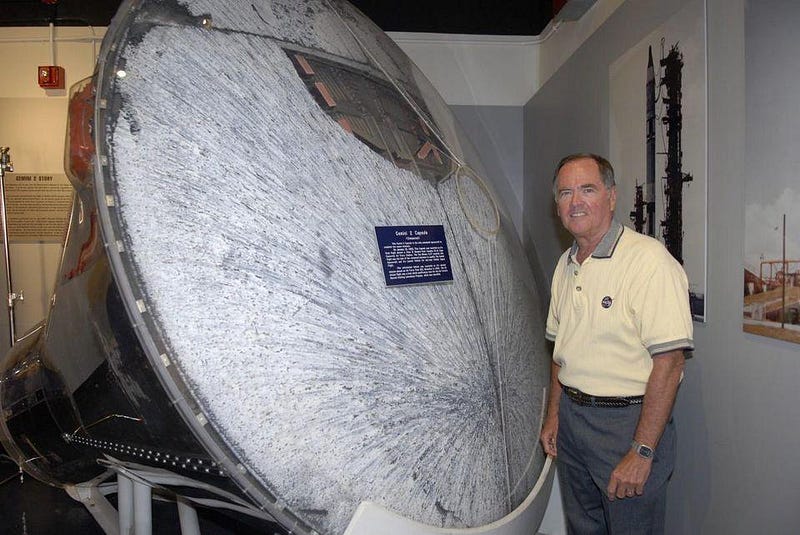
But the accelerations, even if we could render the air resistance problem a non-factor, would still pose serious trouble. Going from 0-to-60 miles-per-hour (0-to-100 kph) in something like 0.1 seconds is a disaster for most humans; we tend to pass out at such large accelerations. If 1 g is the gravitational acceleration at the surface of the Earth, this example of going 0-to-60 leads to 27 gs of acceleration. But Santa, to reach his average house-to-house traveling speed, requires 1.5 billion gs.
The record for human endurance of accelerations over very short timescales is held by Major John Beeding, who reached 83 gs on a rocket sled back in 1954. However, the way to endure it doesn’t necessarily require transforming Santa into a robotic cyborg, but simply to keep his blood flowing normally through is body. Believe it or not, a sufficiently pressurized suit, combined with a turbine/pump system that’s more powerful than a human heart, would keep him conscious through it all.
You might not think about biological modification when you think of Santa, but the happiness of children all across the world is surely worth a little organ replacement surgery.
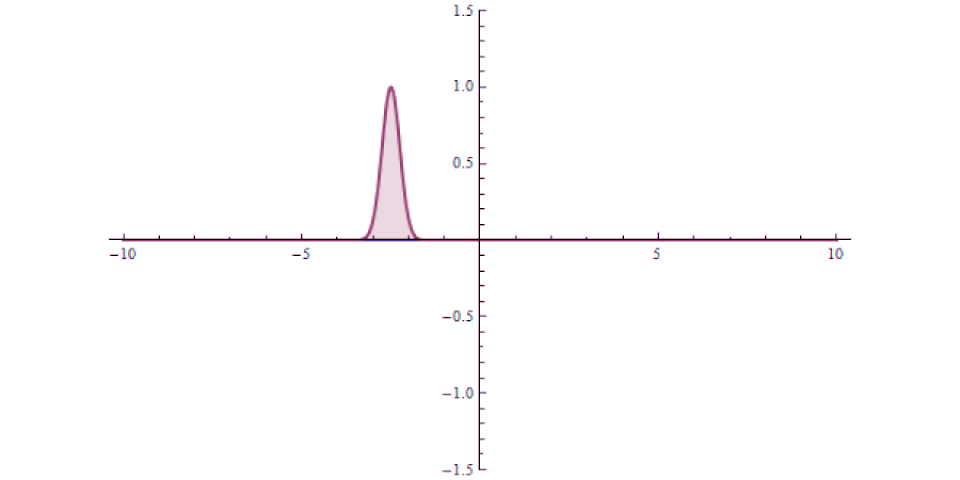
3.) Entry into each house. Climbing down a few million chimneys, many of which have roaring fires in them — in addition to the millions of houses with no chimney to speak of — is clearly a folk tale from the distant past. A mechanical rig poses a number of obstacles as well, and we definitely don’t want to resort to “Christmas magic” as the explanation for Santa’s antics. Not, that is, when science offers us a plausible option.
In the quantum Universe, there’s a finite probability that whenever any mass runs into a barrier of finite thickness, it can tunnel through to the other side instead of smashing into it or bouncing off of it. This phenomenon, known as quantum tunneling, is known to occur, and its probability can be calculated. If Santa has mastered control of quantum tunneling, he could easily:
- enter houses at will,
- bring whatever he needed inside,
- accomplish his Santa-esque tasks,
- and then exit back to his sleigh.
When science is involved, never bet against Santa.

4.) What about delivering the presents? This is one step that really shouldn’t take much time at all. As long as Santa properly tunnels to exactly the correct location, such as by the tree or the carefully hung stockings, this can be a practically instantaneous process. If you find yourself in the right location with the presents you want to deliver, all you have to do is this: let go of them.
Ideally, Santa would bring the wrapped presents in at a tiny, negligible distance above the ground, right by/under the tree, and release them. That’s one of the two main Santa tasks that are required in each of the 500 million homes: present delivery. So long as he arrives safely at the house and in a timely fashion, enters without a problem, and drops off the presents, he’s almost ready to leave. There’s just one more task to go, and it’s perhaps the most important task of all.

5.) The eating of the Christmas snacks. Without this source of energy, Santa and his team of reindeer might not have the necessary fuel to make it around the world to all half-a-billion households. He’s got a lot of weight to carry with him — millions of tons of presents — to make all those children happy. And he’s got to drag that weight for over 100 million of miles (or kilometers) before he’s done with his deliveries.
Everything in the Universe, even Santa Claus and his flying reindeer, must obey the conservation of energy. Even if we assume a modest 2.0 kilogram (4.5 pounds) of presents to each household, that’s still about 4,000 times the payload capacity of the largest aircraft on Earth: the Antonov An-255, which was used for many years to transport the space shuttle from its touchdown location to its ultimate destination.

But rather than rocket fuel, which converts only about 0.0001% of its mass into energy, Santa (and his flight-powering reindeer) could leverage Einstein’s most famous equation to turn mass into energy at 100% efficiency: E=mc². The tiny, small amounts of mass present in even a single small cookie, just a few grams, could power Santa and his million-ton load from one house to the next, all because of the unbridled efficiency of mass-energy equivalence.
Whether you leave Santa cookies and milk, pretzels and beer, cheese and crackers, or eggnog and fruitcake, it’s all the same: it has mass that can be converted into energy. With that power in his back pocket, Santa can not only complete the journey, he just might wind up with a year’s supply of human, reindeer, and elf snacks. From his long-night journey, he might pick up enough leftovers to get him through the non-Christmas season, too.
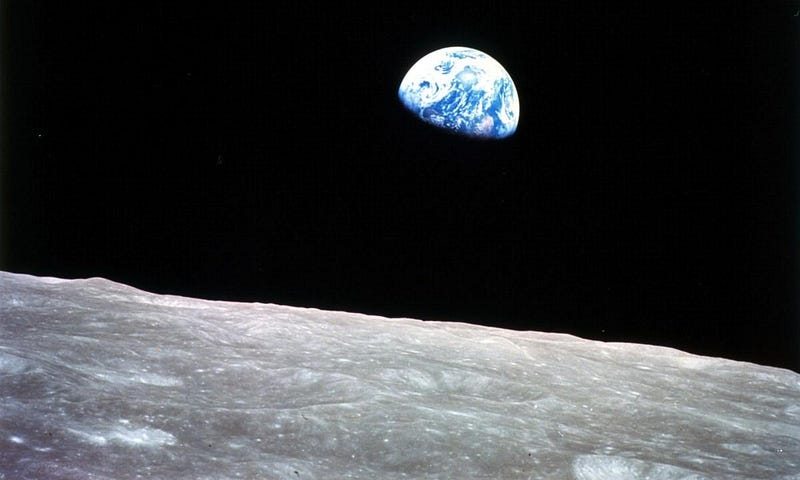
It’s true that most people who tell the story of Santa Claus can’t be bothered with the true scientific details of the Christmas story, preferring instead to rely on fables, miracles, or Christmas magic. But mythical technology, an army of helpers, or actual magic are just stories we tell to hide the real secret to Santa’s annual Christmas journey: the scientific breakthroughs that he alone has unlocked.
Which brings us to the biggest question of all: is Santa Claus real? This was a question left to the imaginations of many, but it all changed 51 years ago when the first humans orbited the Moon aboard Apollo 8. The following exchange between Ken Mattingly (at mission control in Houston) and Jim Lovell (aboard Apollo 8) really doesn’t leave any doubt.
089:32:50 Mattingly: Apollo 8, Houston. [No answer.]
089:33:38 Mattingly: Apollo 8, Houston.
089:34:16 Lovell: Houston, Apollo 8, over.
089:34:19 Mattingly: Hello, Apollo 8. Loud and clear.
089:34:25 Lovell: Roger. Please be informed there is a Santa Claus.
089:34:31 Mattingly: That’s affirmative. You’re the best ones to know.
Merry Christmas and Happy Holidays to one and all. There’s only one mystery science has yet to solve about Santa: how does he go to the bathroom? Perhaps that’s a mystery best left to the 2020s.
Ethan Siegel is the author of Beyond the Galaxy and Treknology. You can pre-order his third book, currently in development: the Encyclopaedia Cosmologica.





